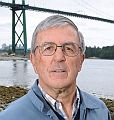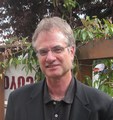FLASHBACK TO 2010: “A vision with a task is the hope of the world,” stated Kim Stephens in his panel presentation about Uncertain Water Supplies at the 2nd Annual Symposium on Planning for Resilience hosted by the UBC School of Community and Regional Planning

“Time and time again in my career, I have seen how we create layers of complexity around assumptions. Take any kind of an issue, drill down or peel back the layers of the onion, until you get to the simple assumption. So often, experience shows, the assumption is flawed. If you ask a different question, you may get a different answer,” stated Kim Stephens. “Too often, we seem to lose sight of the fact that the future is unpredictable. Part of that may be resulting from our increasing dependence on computers. They are great but computers are not a substitute for judgment.”










